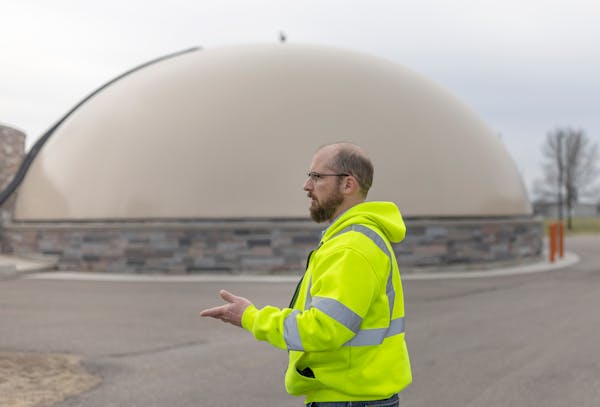ST. CLOUD - Tucked among fields on the South Side of St. Cloud is an innovative facility creating jobs, renewable energy and farm products. But it isn't a private business; it's the city's wastewater treatment plant — and the state's only municipal facility turning waste into fuel and fertilizer.
Gov. Tim Walz visited the facility Tuesday as part of a statewide tour highlighting infrastructure needs ahead of the 2024 legislative session.
"Not a lot of people want to talk about wastewater, but we all deal with it. It's critically important," Walz said after learning about the facility's groundbreaking programs. Not only does the plant produce enough energy to power the facility and sell energy back to the grid, it is also poised to be the first wastewater facility in the world to produce green hydrogen fuel on-site.
"It's an exciting, exciting way to do business," Walz said. "In the long run, we're going to save money out here, we're going to clean the environment [and] we're going to make services better for the people of St. Cloud."
In the past 25 years, the city has made more than $150 million worth of upgrades to its water and wastewater facilities using federal funding distributed to the city by way of low-interest loans, which saved taxpayers about $18 million during that time, according to Tracy Hodel, public services director for St. Cloud.
The loans go through the state's Public Facilities Authority and are typically approved as part of the Legislature's bonding bill. Last year, the organization funded about $300 million in projects across the state, according to its director, Jeff Freeman.
The loans are another way for cities to fund water and wastewater projects, which Walz acknowledged are often difficult for small communities to pay for. Several cities, including Brainerd, Cold Spring and Duluth, are requesting the Legislature fund projects related to water mains, storm sewers and wastewater facilities in next year's bonding bill.
Yet lawmakers face a difficult task next year picking which projects get funding. State officials received $7.2 billion in project proposals through June of this year, far more than lawmakers could bond for, according to Minnesota statute.
"There's a lot of need out there in the whole state," Senate Capital Investment Committee Chair Sandy Pappas said last week during a tour of projects in the Rochester area.
Pappas, DFL-St. Paul, said she expects a smaller bonding bill in 2024 after the Legislature passed a $2.6 billion package in May, the largest infrastructure bill in state history.
Last year's bill came after years of gridlock between lawmakers; no bonding package had been passed since 2020.
Pappas estimates $1.5 billion to $1.6 billion will be spent on public works next spring.
Walz said Tuesday he will announce his bonding proposal in January.
Star Tribune staff writer Trey Mewes contributed to this story.
Police ID driver who exited I-94 at 'very high rate of speed' and caused crash that injured 5 in SUV

U of M's interim president meets with pro-Palestinian protest organizers

